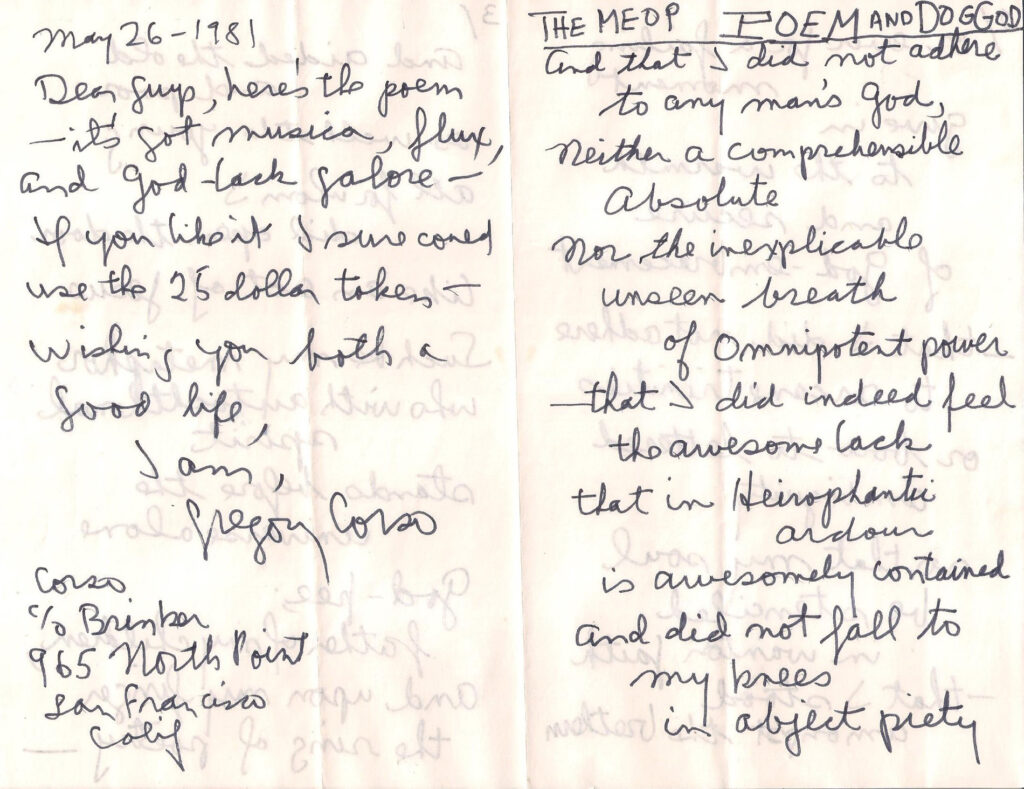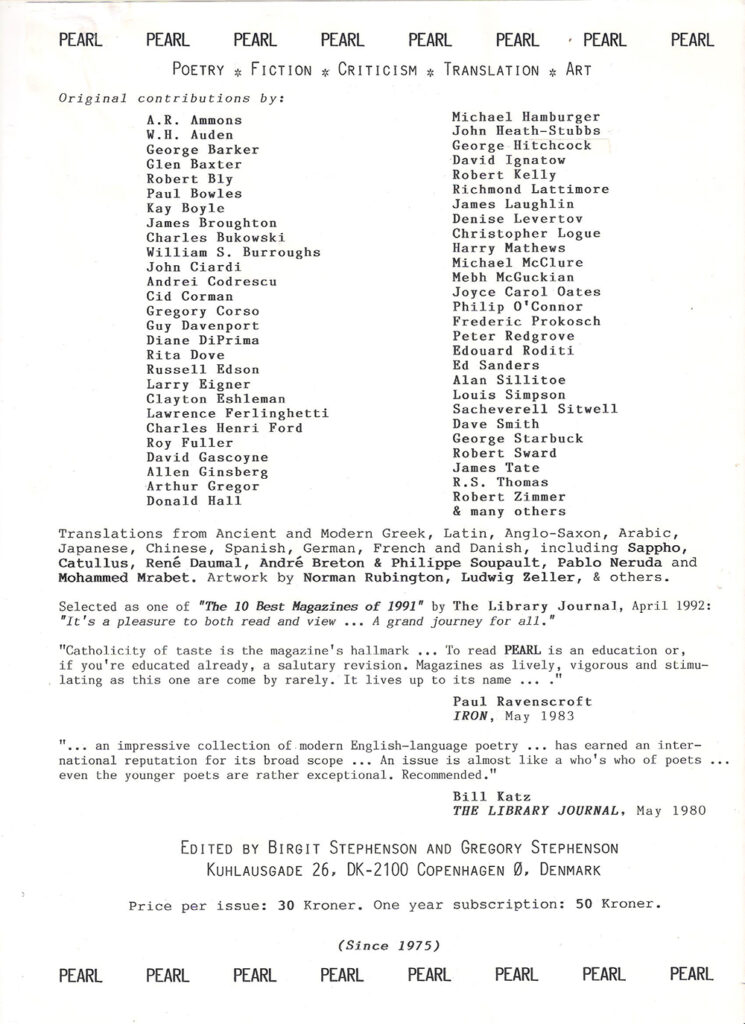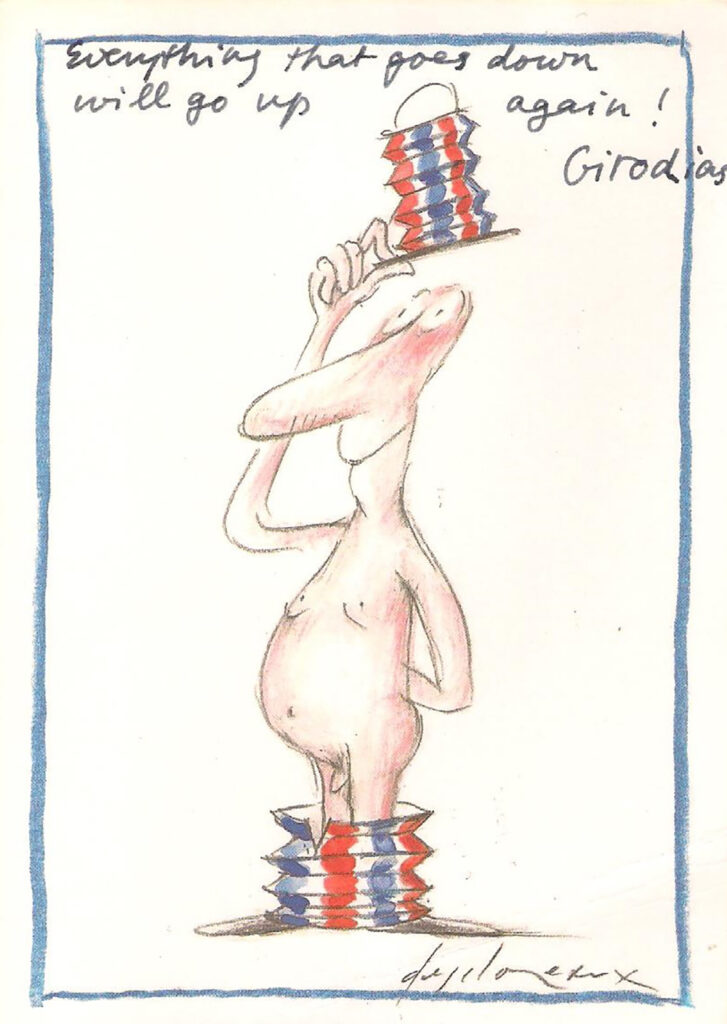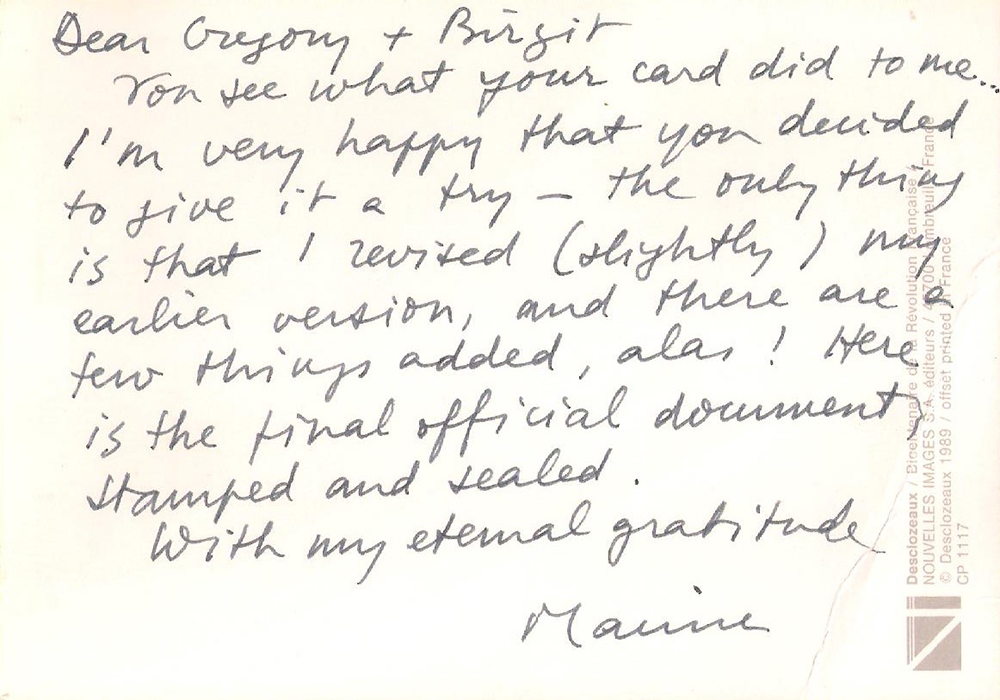Pearl Archive
In addition to writers’ personal and professional papers, the Modern Literature Collection also consists of archives of small literary presses (e.g. Lord John Press Collection, Release Press Archive, Trigam Press Archive) and periodicals (e.g. River Styx Archive, Perspective Archive). Last year, we added to these resources with the acquisition of the Pearl Archive.
Pearl was a literary magazine focused on poetry started in Denmark by Gregory Stephenson, an American expatriate, and his Danish wife, Birgit. The first issue appeared in autumn 1975. From the beginning, the stapled, photolitho magazine with illustrated front and back covers published eclectic styles of poetry from an impressive list of (mainly) Anglo-American poets.
In a 1982 letter to reviewer Paul Ravenscroft, Stephenson explained: “I wanted to avoid as much as possible all cliques and coteries and just print what I thought was work of value, whether formalist or experimental.” Ravenscroft’s review of Pearl appeared in the UK literary magazine IRON, no. 35, 1982.
Library Journal quoted him in their May 1980 review: “There are poems and texts by beats, expatriates, academics, surrealists, rhymed poems and poems in open form, prose poems, fables, poems from Americans, Englishmen, Irishmen, etc.” The entry concludes: “An issue is almost like a who’s who of poets. … Not all are that well known, but even the younger poets are rather exceptional.”
For the first three years, Pearl was published twice a year. Stephenson solicited and received work from such writers as Lawrence Ferlinghetti, Joyce Carol Oates, Denise Levertov, Charles Bukowski, and Rita Dove.
The Pearl Archive contains the writers’ correspondence and submissions, as well as each issue’s camera-ready layout and finished magazine. These materials are arranged by issue, as Stephenson kept and sent them to us.
Though the publishing frequency slowed down after 1978, the caliber of new contributors did not diminish—e.g., Allen Ginsberg, Gregory Corso, Kay Boyle, C.D. Wright, Paul Bowles—and other writers, such as Ferlinghetti and Levertov, appeared again. The writers often expressed their admiration for the magazine in their submission cover letters.
Due to funding restraints, Pearl went on publishing hiatus from 1983-90. When bookstore owner Lars Rasmussen offered to fund Pearl, the Stephensons began publishing it again in the early 90s, with many of authors returning to its pages, especially those most associated with the American Beats. Michael McClure and Diane di Prima were among those who joined the roster during this time.
![A hand-written submission letter and poem by Ira Cohen dated 26 July [no year provided]. The poem is titled "For Bill Levy."](https://library.wustl.edu/wp-content/uploads/2021/05/WUL_Spec_MLC_PearlArchive_IraCohenLetter_TwoPoems_1o3-737x1024.jpeg)
Through its production and circulation remained modest, Pearl’s reputation continued to grow internationally. Library Journal pronounced Pearl to be among “The 10 Best Magazines of 1991” (article of the same name by Bill Katz, Library Journal April 15, 1992). However, the revival of Pearl was short-lived, again due to financial limitations. After four issues in the 1990s, it ceased publication for good.
Stephenson, a professor of American literature and history at the University of Copenhagen and a writer of critical studies on authors such as Robert Stone, Gregory Corso, and J. G. Ballard, also had an affinity for surrealist writers. He became friends with British memoirist (and poet/painter) Philip O’Connor, and the collection contains 280 letters written over the last 20 years of O’Connor’s life. Up to his last days in the hospital, O’Connor wrote to Stephenson frequently, and the letters were quite long, often with enclosures.
Stephenson relayed to me in an email: “Philip’s letters are philosophical ruminations, personal reflections, evaluations of literature, personal news, memories, remarks and comments.” These letters and their many enclosures can be found in the General Correspondence series.
Charles Henri Ford was another surrealist writer and artist who wrote to Stephenson. Prospectuses and advertisements for his exhibitions are included with his letters. Also in the General Correspondence series are eleven letters from 1988-89, with enclosures, from Maurice Girodias, infamous founder of Olympia Press in Paris.
Stephenson explained in the same email to me: “Zoe was a publishing venture that Maurice Girodias hoped to begin. I had talked with him about it in person in Paris, encouraging him. He sent me his hand-typed draft (ultimately two drafts) for a prospectus, asking me to translate into English what he had written in French. (My translation is included.) Due to lack of funding, his Zoe project never got off the ground. It is possible that these drafts are all that remain of the proposed project.”
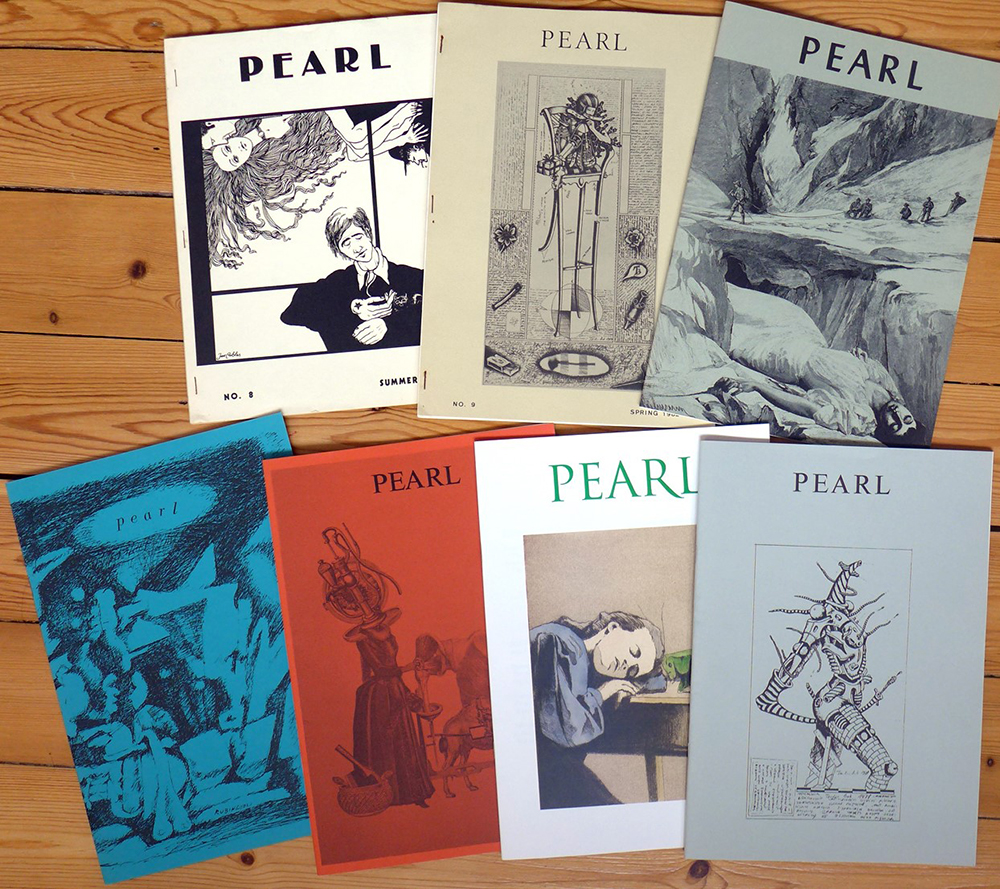
The Pearl Archive will be available for research when John M. Olin Library reopens to the public. In the meantime, please peruse the finding aid and contact us with any questions.

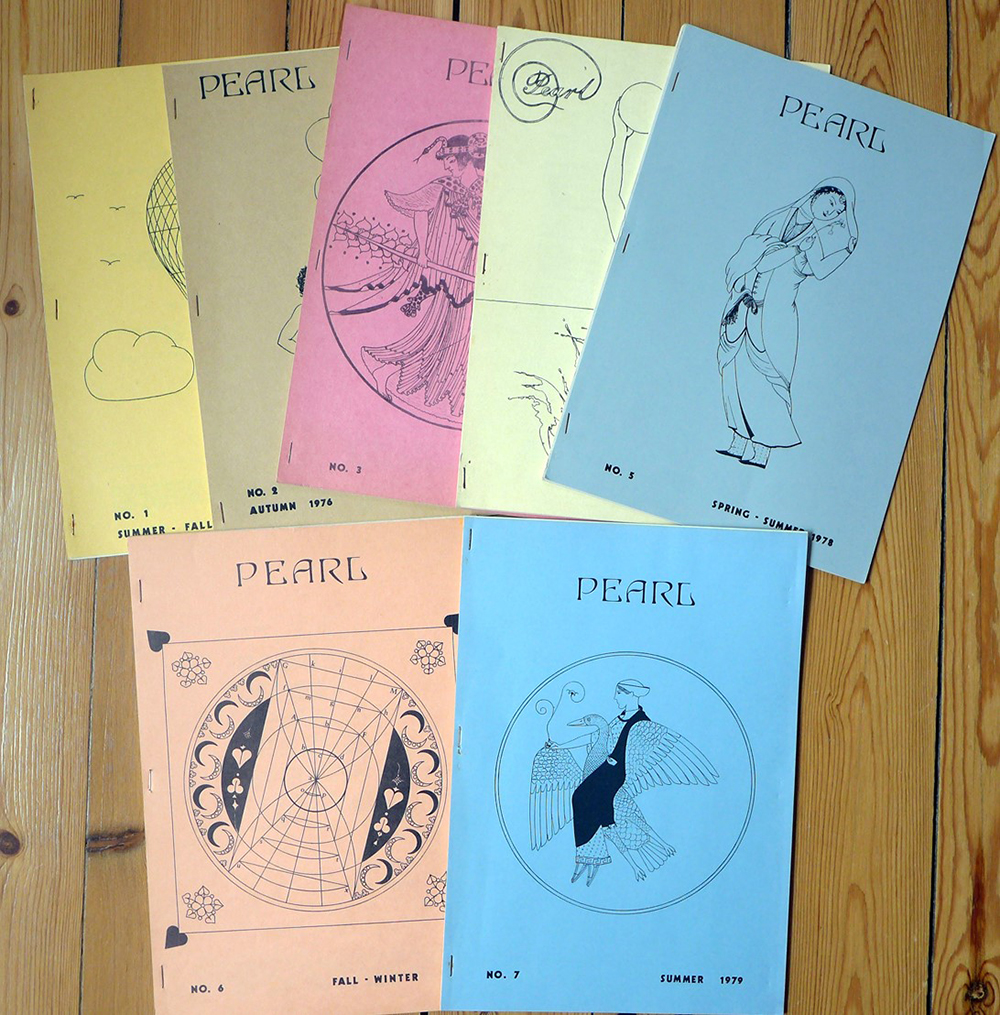
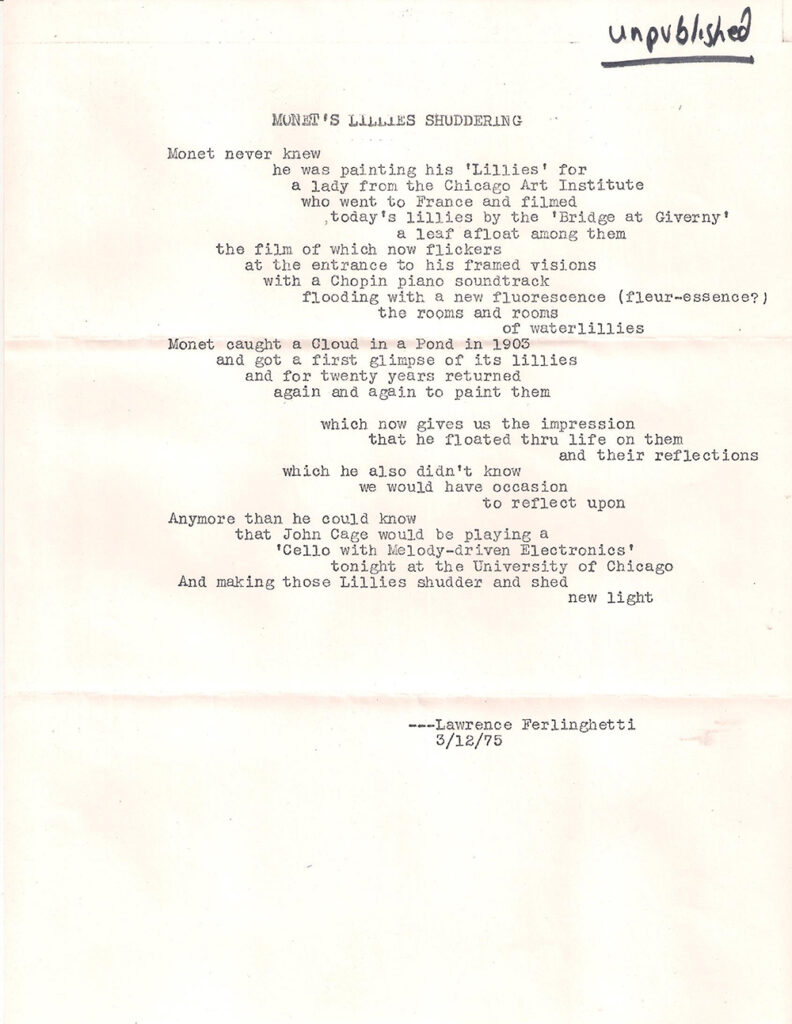
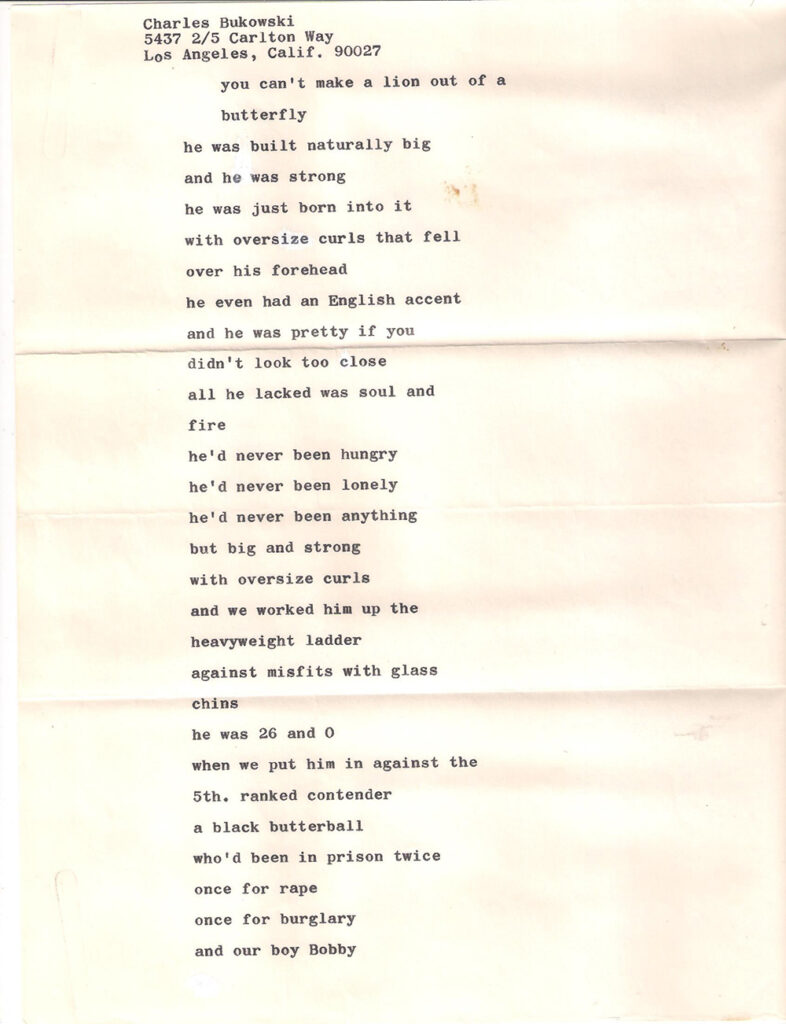
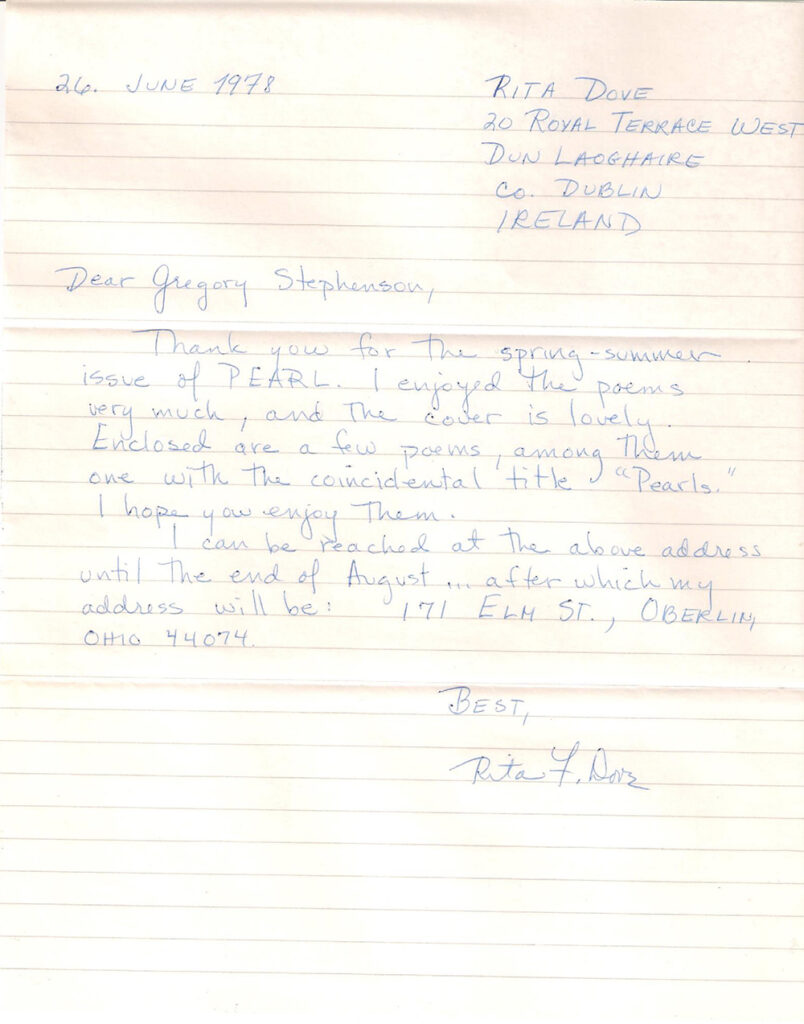
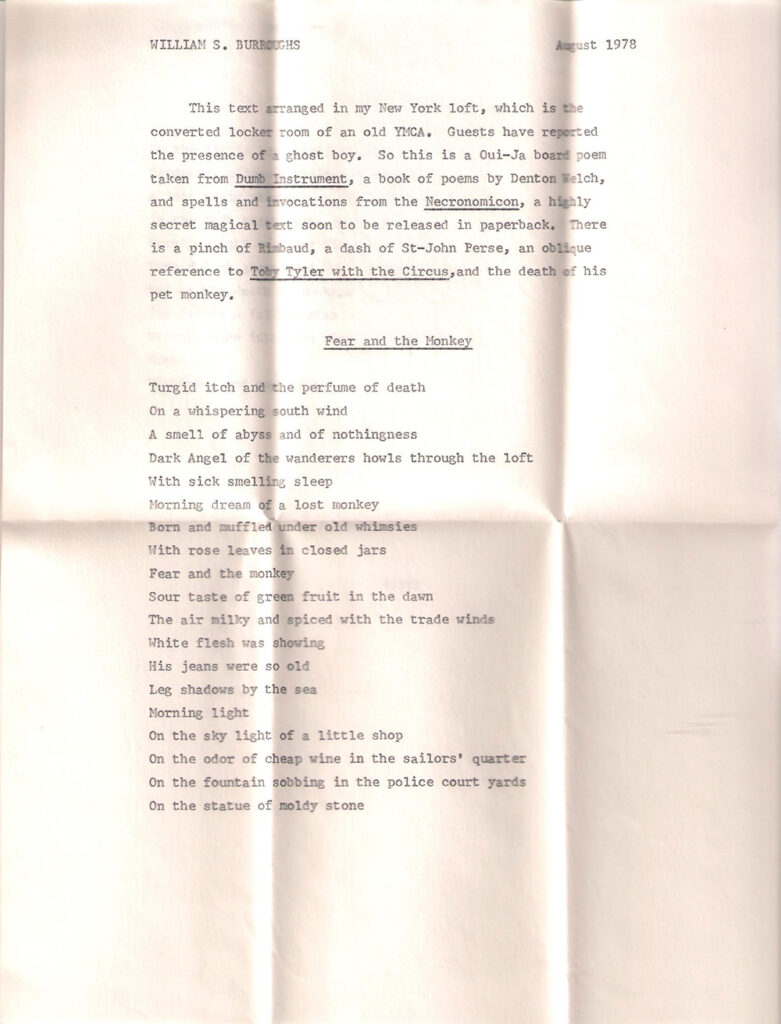
![Hand-drawn with indelible markers, this image shows a mock cover page drawn by Lawrence Ferlinghetti. The title on the cover is "An Elegy to Dispel Gloom [After the Assassinations of Mayor George Moscone of San Francisco and City Supervisor Harvey Milk November 27, 1978]."](https://library.wustl.edu/wp-content/uploads/2021/05/WUL_Spec_MLC_PearlArchive_FerlinghettiPoem_nclosure-835x1024.jpeg)
